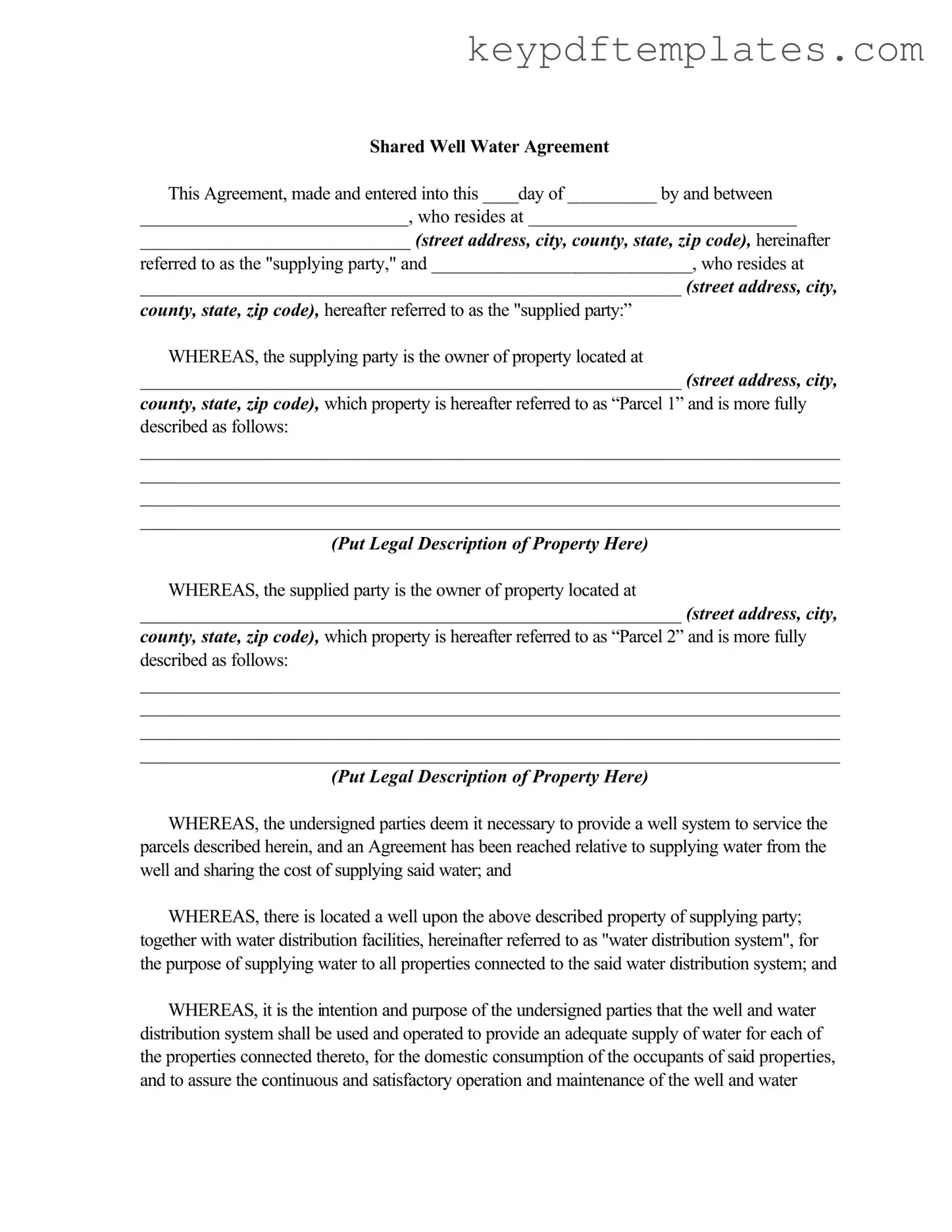Get Shared Well Agreement Form
The Shared Well Agreement is a legal document that outlines the terms and conditions under which two or more property owners share a well and its water distribution system. This agreement ensures that all parties have access to water for domestic use while also detailing their responsibilities regarding maintenance and costs. By formalizing these arrangements, the agreement aims to protect the interests of both the supplying and supplied parties.
Modify Document Online
